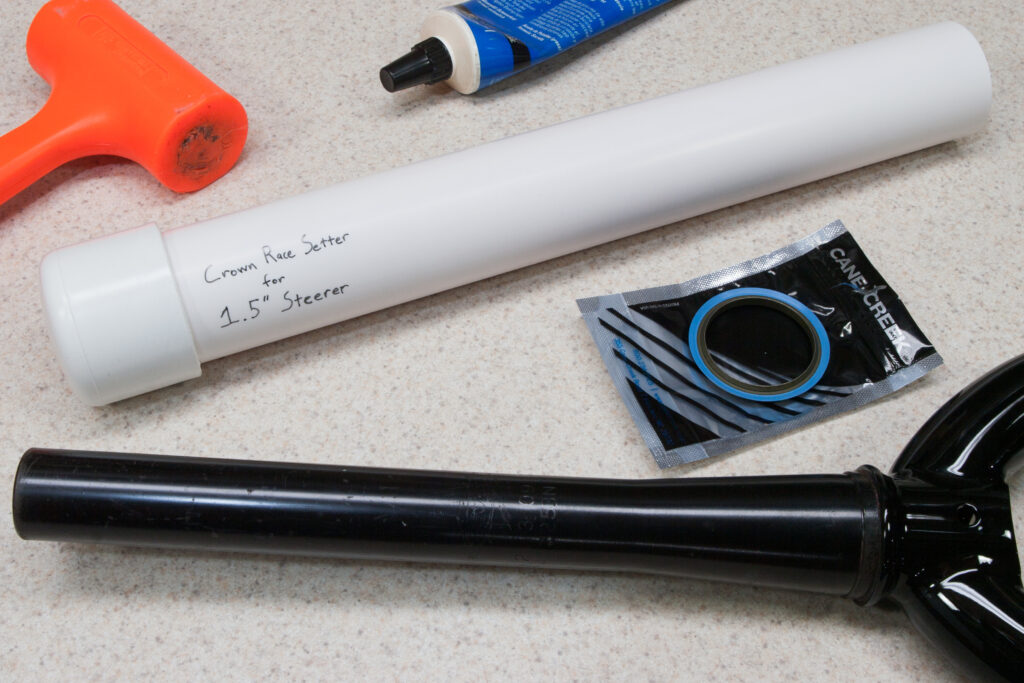
With Dually rims acquired I started looking around for parts to build up a high volume front wheel for the El Mariachi Ti when it is sporting its new rigid fork. Within a few days of poking around on eBay I had everything needed, some nice spokes, a Shimano XT hub (same as on the OE El Mariachi Ti wheels), and some generic (but nice) blue nipples.
On Wednesday evening I laced the wheel, and thinking everything had gone great I tensioned it on Thursday night, finding myself very happy with how it came out. Tension was very even, it was true to within 0.5mm, and dished to less than that. All was good until I started looking it over and found that I’d made a very amateurish mistake, something I haven’t done on any of the other wheels I’ve built: I put the valve stem hole in the wrong spot: photo.
If I’d made this mistake on a normal rim I could have easily shuffled the spokes one hole over and all would be good. Not so on the Dually with its offset drilling. This required me to completely unlace and rebuild the wheel to get it right. This morning I found myself awake particularly early (a combination of Danielle’s alarm and my consuming too much caffeine the day before), so I headed down to the basement and relaced the wheel before going to work.
This evening I tensioned it, fit the tire, and set it up as tubeless. During tubeless setup I was a bit concerned that I didn’t have tape wide enough to cover the spoke holes, but as this photo shows, Velocity’s 24mm Velotape is more than wide enough to cover the spoke holes. All went good, and now I’m looking forward to dry trails so I can try the wheel. I may also try it in the suspension fork, as it fits very nicely: photo.
The assembled wheel came out to be 1821g with tire and lockring, but without rotor. This is heavy, but it was expected, as the Dually is 215g heavier than the Arch EX normally used on the front of the bike. Being rotating weight this is likely to be noticeable, even with the ~400g saving of the rigid fork. Measuring 63mm wide (7mm more than the 2.25″ tire on the Arch EX) I’m expecting the extra volume to make it worthwhile. If not, it was a fun experiment and the wheel can likely be sold for what I’ve put into it. Total cost was $137.16, not counting the tire which I’ve had sitting on the shelf since late 2012. (I believe the tire was around $40 via Chainlove.)
Here’s the build specifics:
Rim: Velocity Dually 29″ (45mm wide)
Tire: Schwalbe Racing Ralph 2.4″ (Old Tread Pattern, Tubeless Ready)
Spokes: Ritchey-branded DT Swiss Competition 2.0 (296mm)
Nipples: Generic Blue-anodized Aluminum
Hub: Shimano HB-M788 (15mm TA, Centerlock)
Rim Tape: Velocity Velotape (24mm wide)
Valve Stem: Stan’s NoTubes 35mm
Spoke Tension: ~120 kgF on the higher side.








